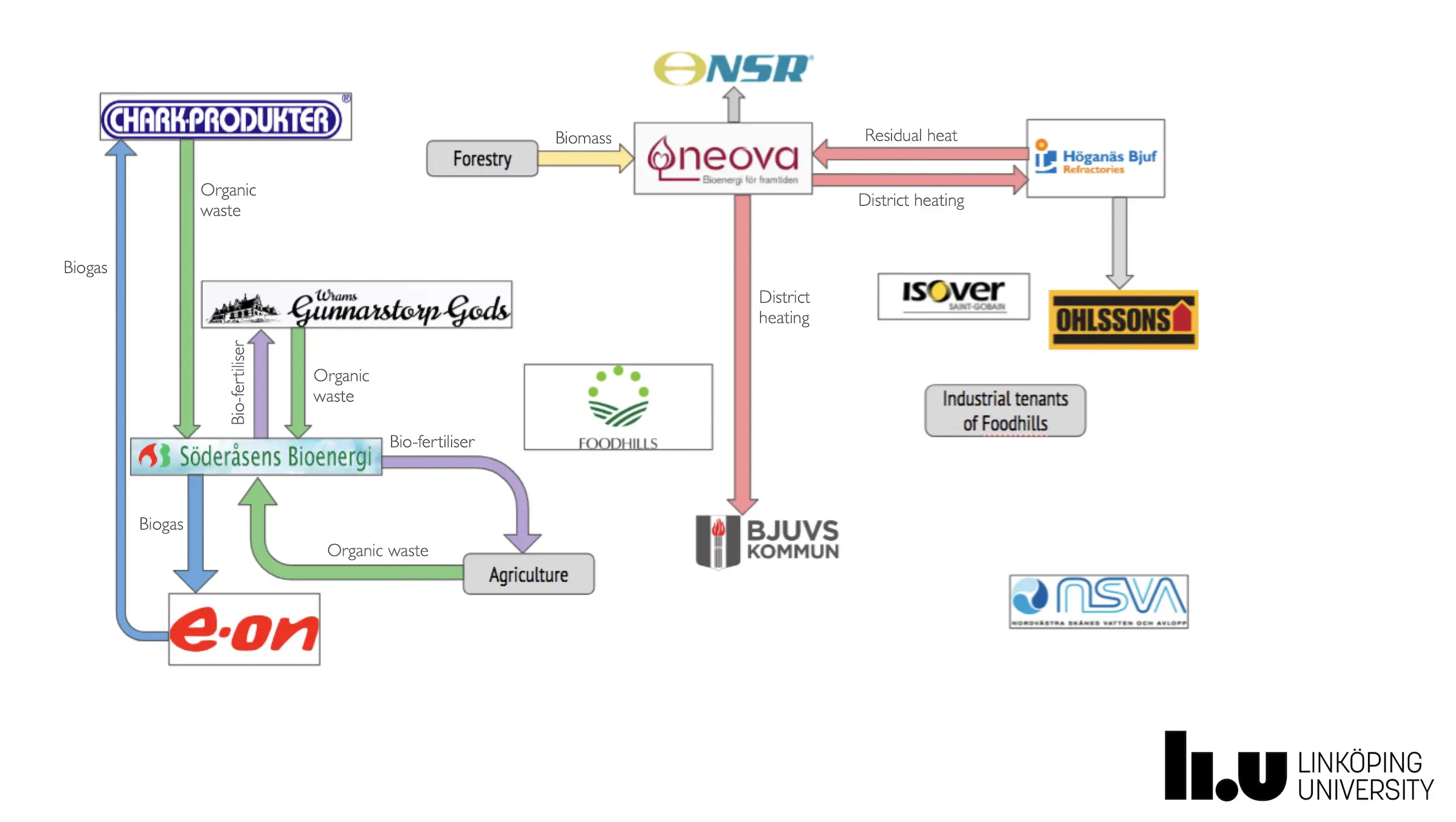Industrial and urban symbiosis in Bjuv
Symbiotic work and strong institutional capacity are the foundation for sustainable food production.
Advantages
- Energy & resource efficiency
- Biobased and secondary resources
- Innovation capacity
- Heat & waste management
- CO2 emissions
- Materials for landfills
Overview
Located in the midst of agricultural land in southern Sweden, Skåne, Bjuv has a long industrial tradition in both mining and food production. Over the years, various actors have produced both food and construction materials, which has contributed to the development of infrastructure companies providing energy and water solutions. These companies have formed synergistic collaborations, enabling the efficient use of secondary resources and shared infrastructure. Such collaborations collectively enhance resource efficiency and provide business, environmental, and socioeconomic benefits.
There was an ambition for Bjuv to become a center for food production, giving rise to the name "Food Valley of Bjuv" as a representation of the developed cluster. Around this cluster, different synergies and collaborations began to emerge, but in 2017, Findus, one of the largest actors in the area, moved its operations away from Bjuv. The loss of this major player shocked the region and set back many advances in several collaborations. However, Bjuv is a region with many dedicated and driven actors, especially public stakeholders, who see an opportunity for rebuilding the region. New industries are becoming more competitive with the help of industrial collaborations and shared infrastructure.
Highlights
Today, there are a few existing synergies and collaborations. The local biogas facility, Söderåsen Bioenergi, produces biogas from residual waste and by-products from nearby actors, such as organic waste from local farms and a nearby butcher. The biogas facility has, in turn, supplied biogas slurry, a by-product of the biogas process, to local farms and biogas to E.ON, which is then used locally by other actors. However, there are great opportunities for further collaborations and an expanded symbiotic network, and efforts to achieve this are ongoing. The focus now for the Food Valley of Bjuv, which is a collaboration between Foodhills, Region Skåne, Bjuv Municipality, and Tillväxtverket, is to build sustainable and circular production systems. In the existing premises in Bjuv, there is room for the expansion of more circular food production systems with industrial and urban collaborations as the foundation.
Driving forces and enablers
Bjuv is in a unique situation where infrastructure is already available and adapted for food processing, but its potential has yet to be fully utilized. Foodhills, which has strong institutional capacity, together with public actors, is working to initiate more circular food production. The potential for success is well-established, and the future looks bright for the development of industrial collaborations.
Fun Fact: Bjuv’s sister city in Europe has been Kalundborg in Denmark, known for its early development of industrial collaborations within industrial symbiosis. Over the years, the cities have shared knowledge and inspiration with each other.

